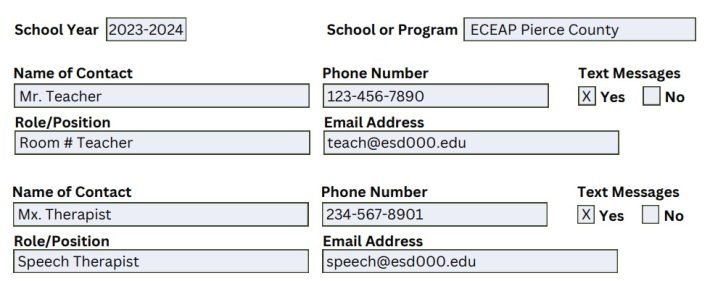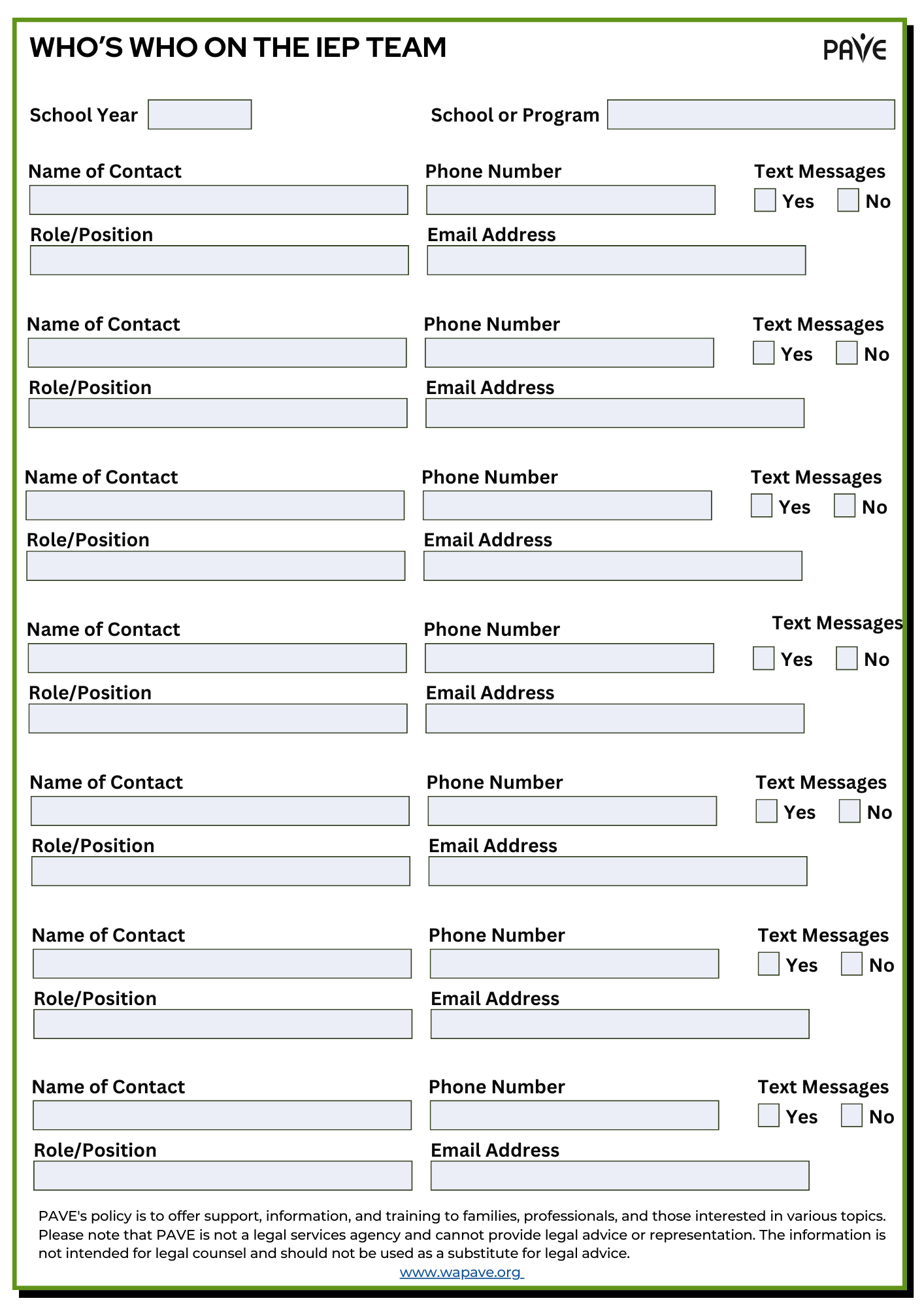This sample letter introduces a child to members of the IEP team by highlighting their strengths and individual personality, while also providing strategies and information about their disability. Use the Today Our Partnership Begins Worksheet to write an introductory letter for your child.
Dear Mr./Mrs./Mx. Teacher,
Today, our partnership begins.
Here are some things about (NAME) that you may not otherwise learn about him/her from his/her file. I invite you to contact me by phone (###-###-####) or email (email@domain.com), anytime you have questions about and how best to reach him/her.
(NAME) is (describe his/her culture and heritage). He/She has lived in Washington State for # months/years. (If you are new to the state, describe where your child has been raised up until this point.)
(If you are a military family, include information about your branch of service and how military moves or operations have impacted your child.)
(NAME) is actively involved in his/her community and he/she enjoys (describe any community participation groups, clubs, activities, or events). Outside of school, (NAME) is interested in (provide a short list of main hobbies, skills, and interests).
Some of my favorite things about (NAME) are his/her (personality and character traits). When he/she has trouble with something, he/she (describe your child’s strengths and existing coping strategies).
(NAME) has (name of disability), which affects him/her by (describe symptoms, challenges, and limitations). He/she has trouble with (list activities and skills that are impacted as a result of the disability). (Use this section to address common assumptions or miscommunications about the diagnosis, such as, “When it seems like he/she is being rebellious, it is really his/her way of showing he/she needs an opportunity to move around for sensory regulation.”)
At home, (NAME) responds well to (explain strategies for supporting your child’s needs, behaviors, sensory regulation, etc.).
I share this with you to start a conversation and share with you what our family has found helpful. We appreciate what you will bring to (NAME)’s life and we want to partner with you to make this a successful school year!
Thank you for taking the time to read this letter and get to know (NAME) a little better. Please feel free to reach out at any time and know that I will contact you as well when I have questions or concerns.
Sincerely
Parent’s Name
Phone number
Email



